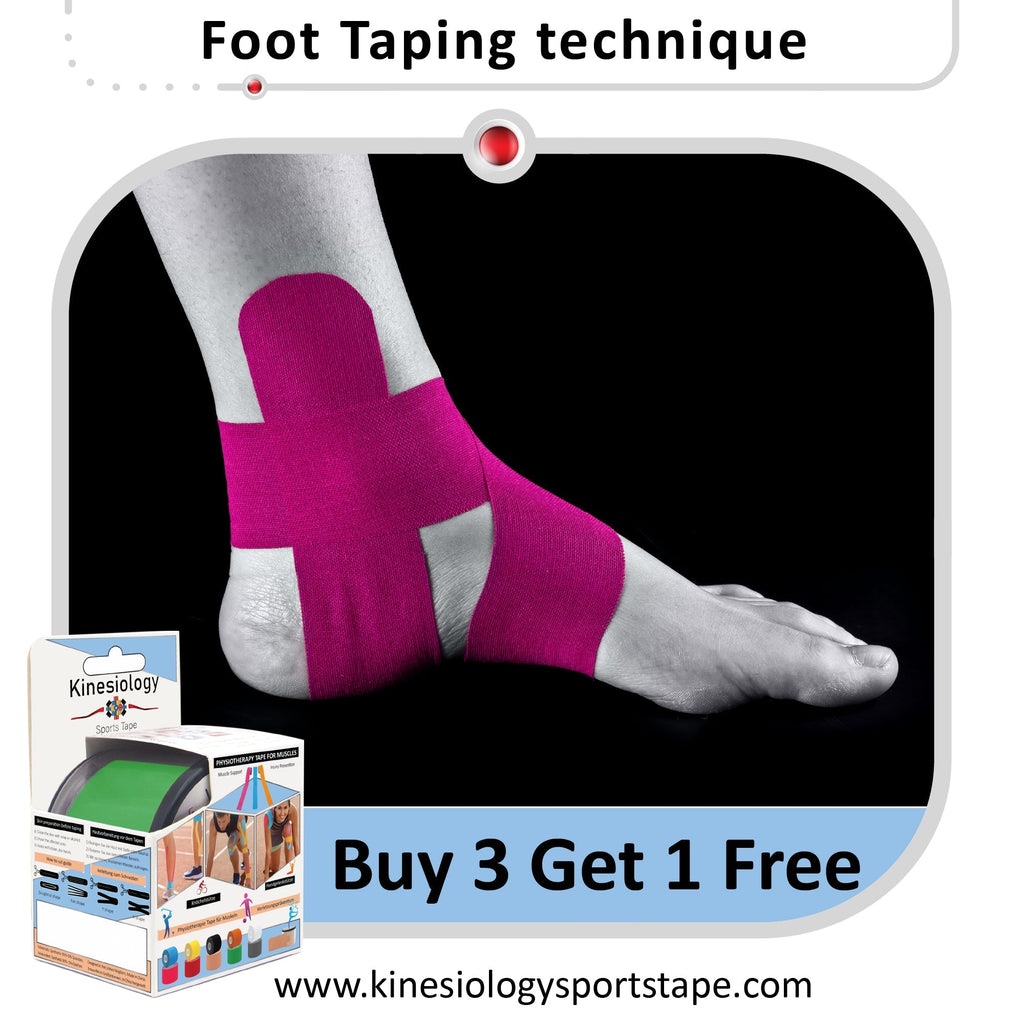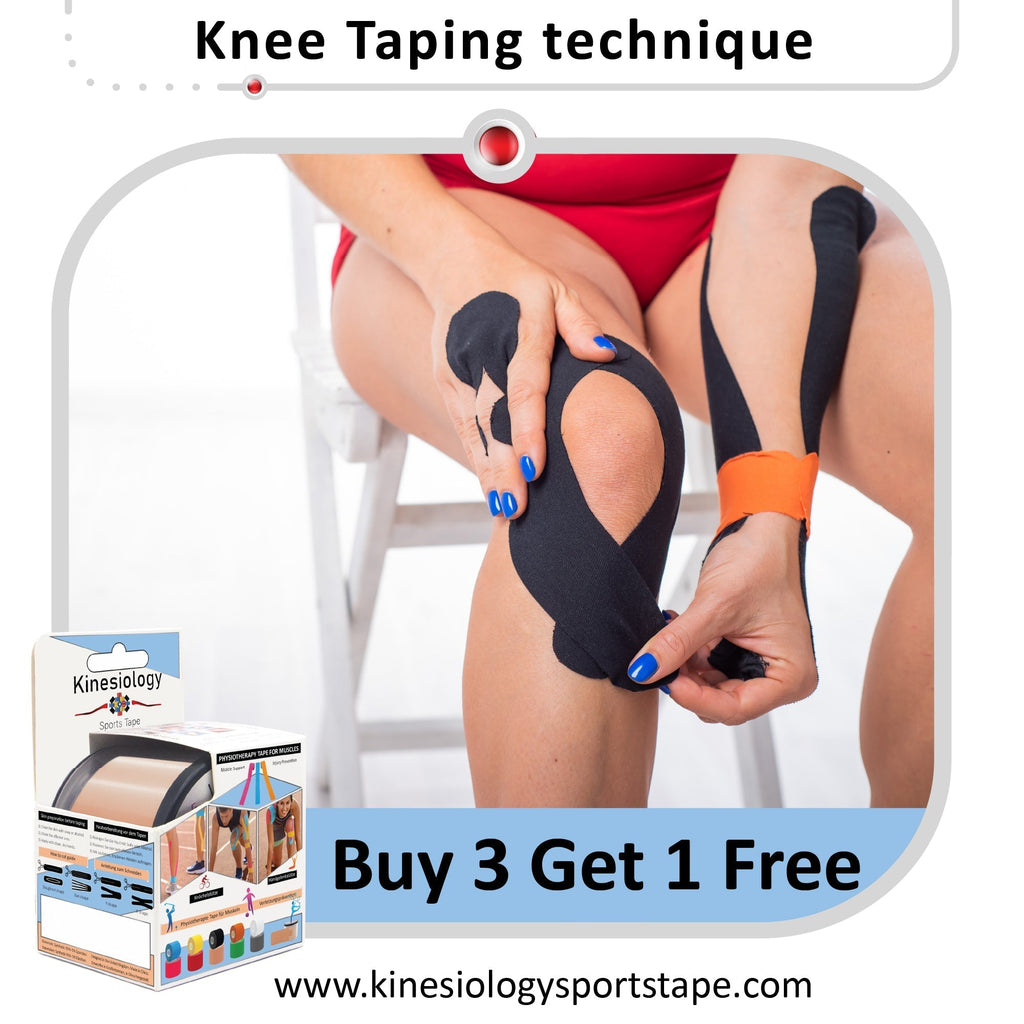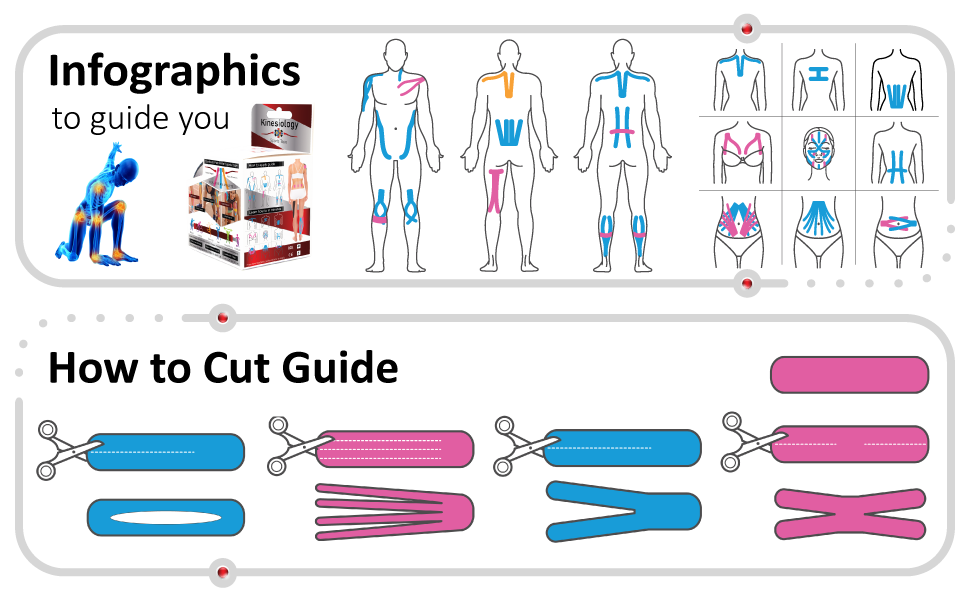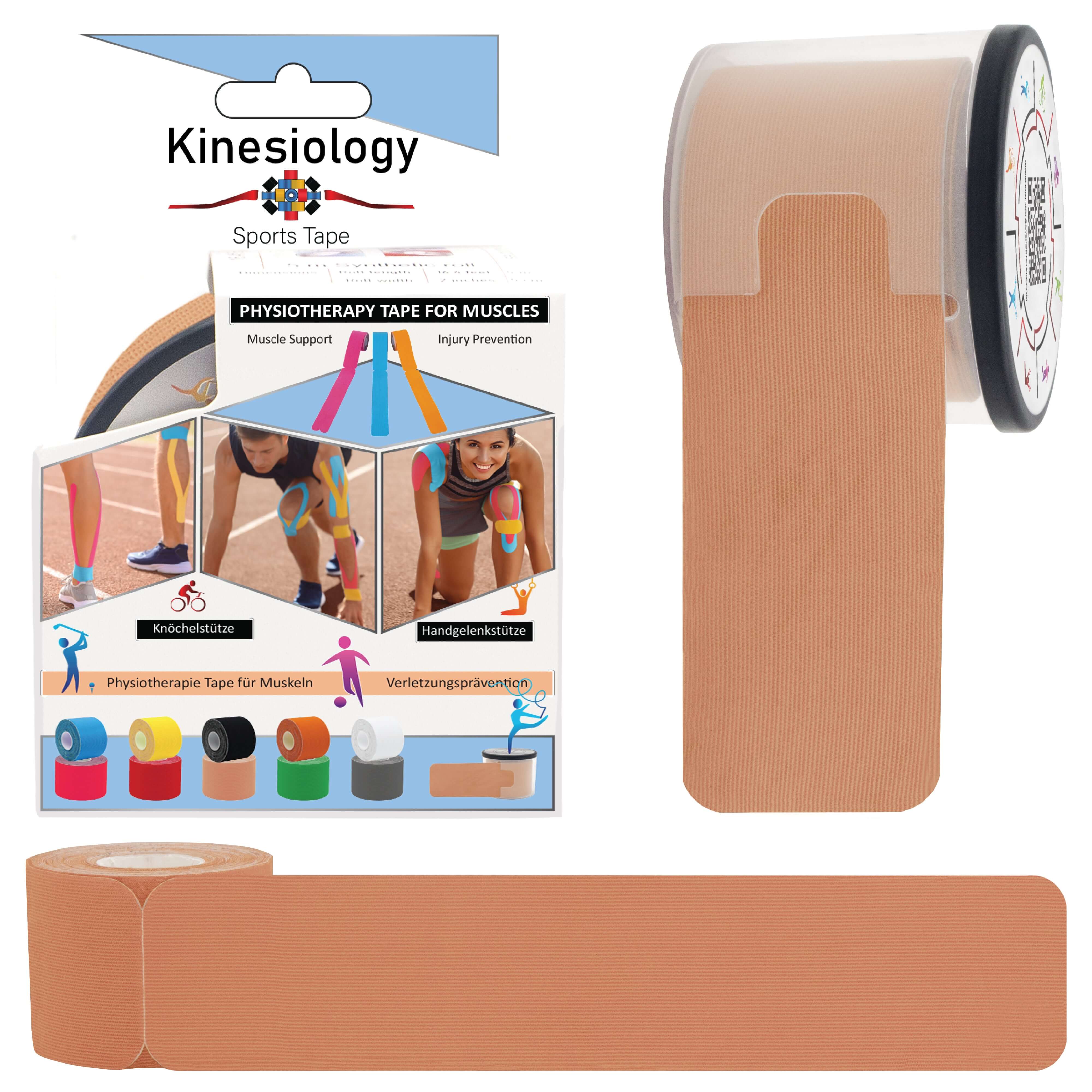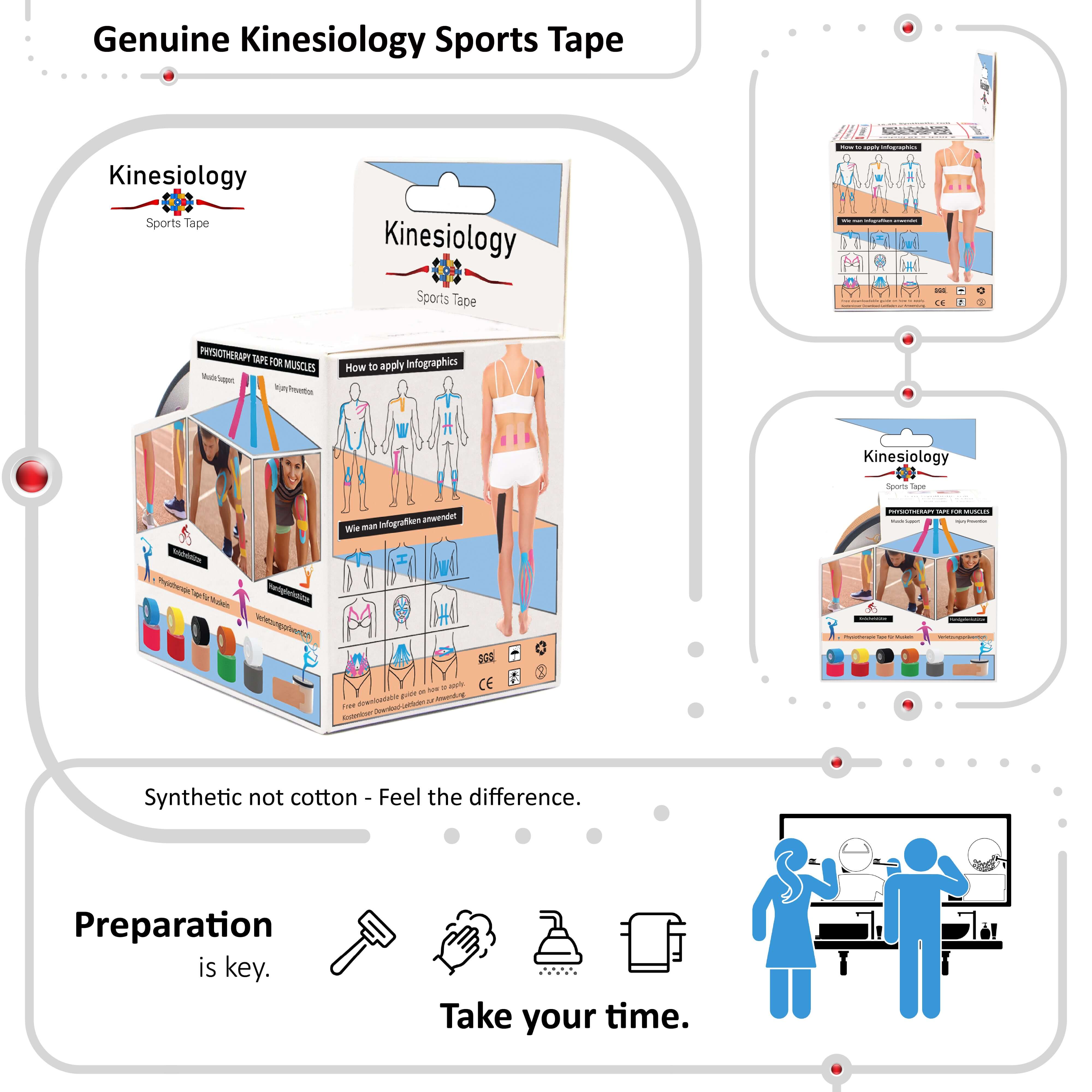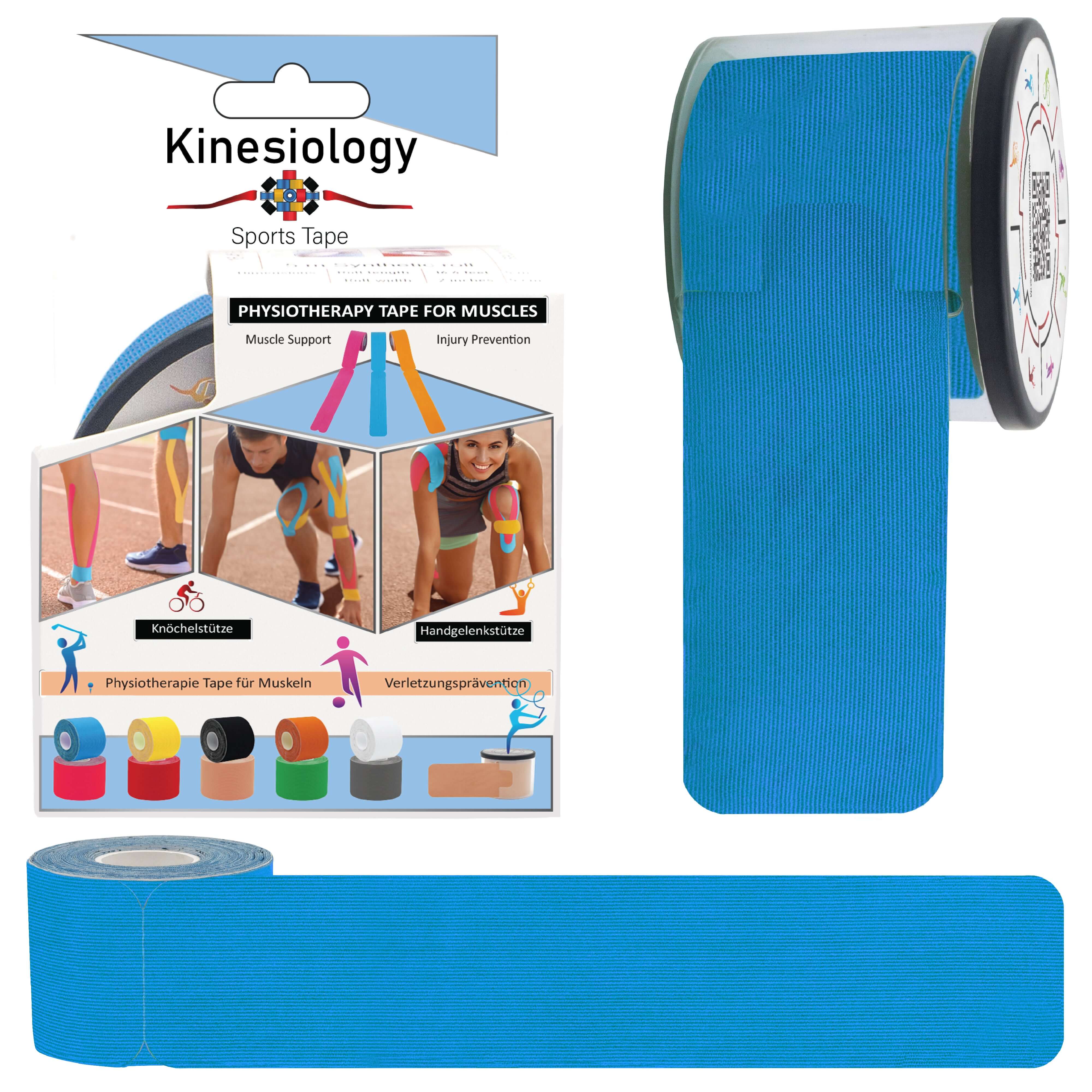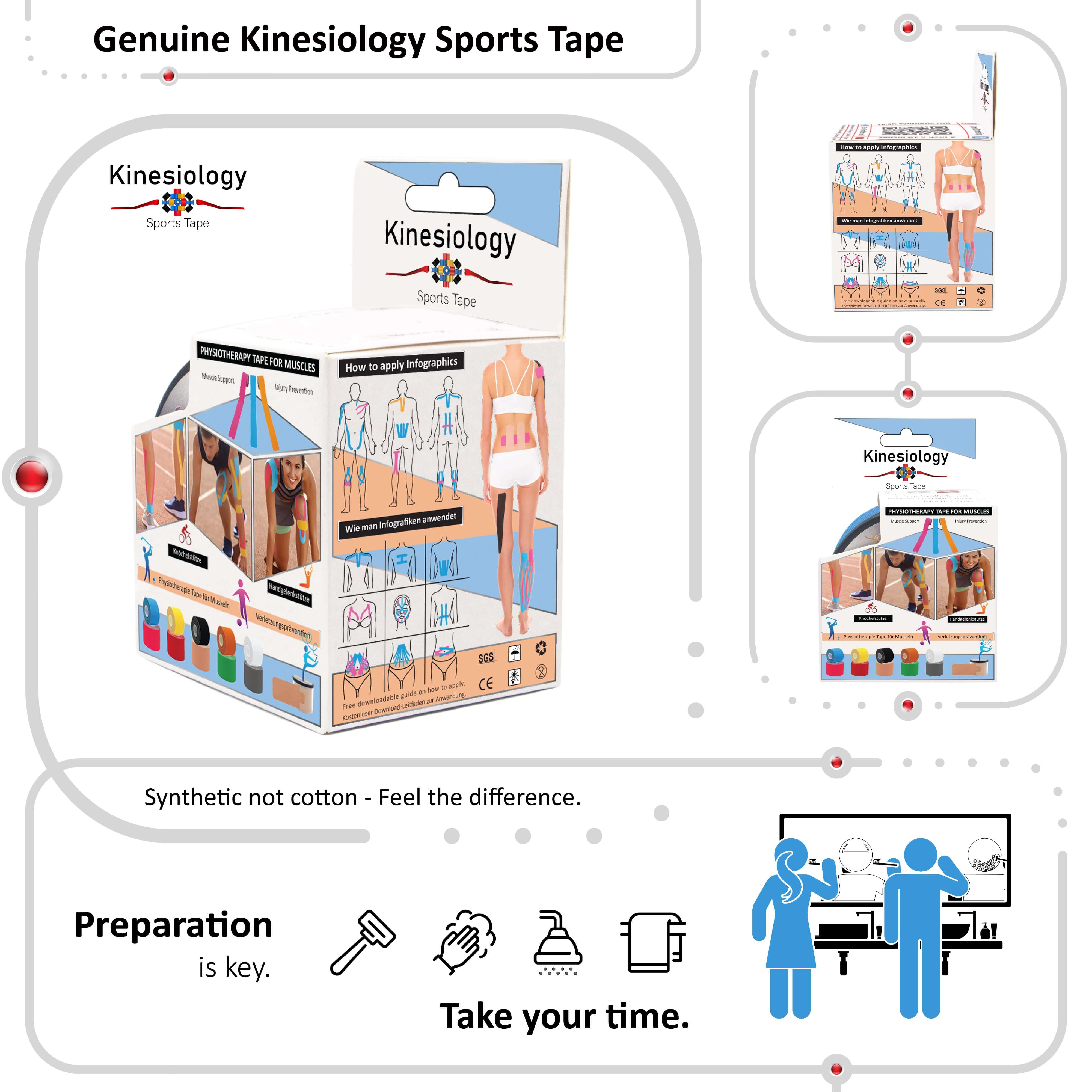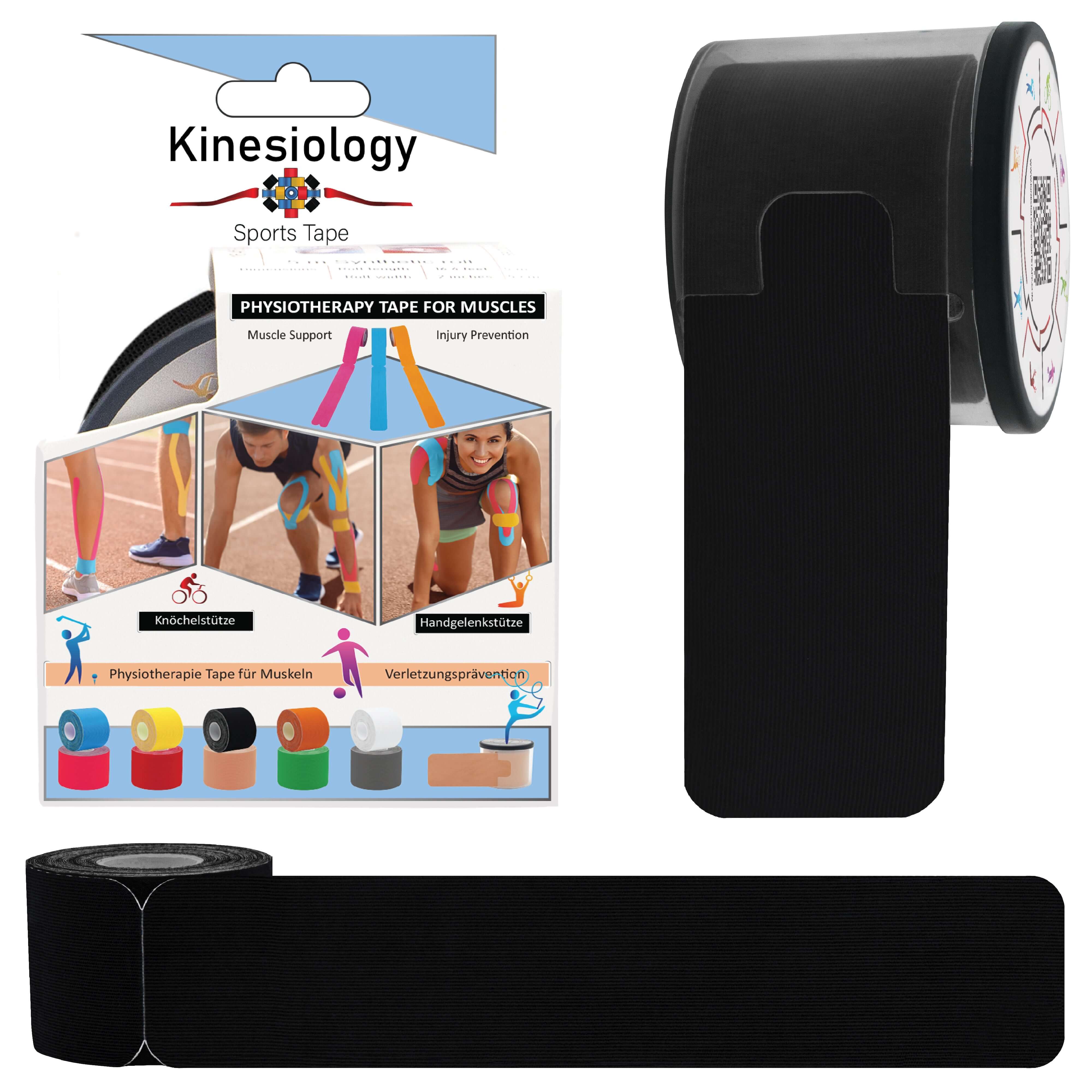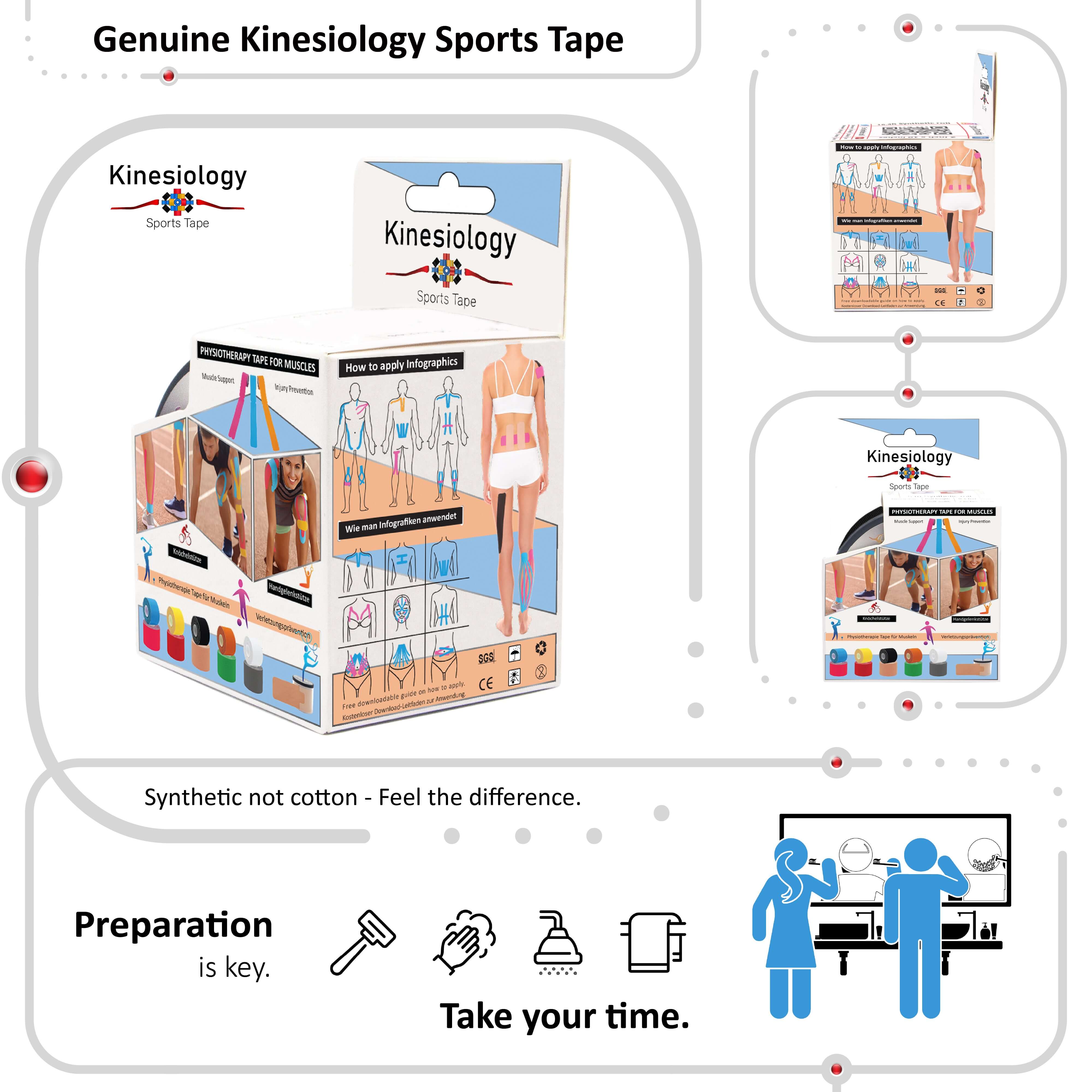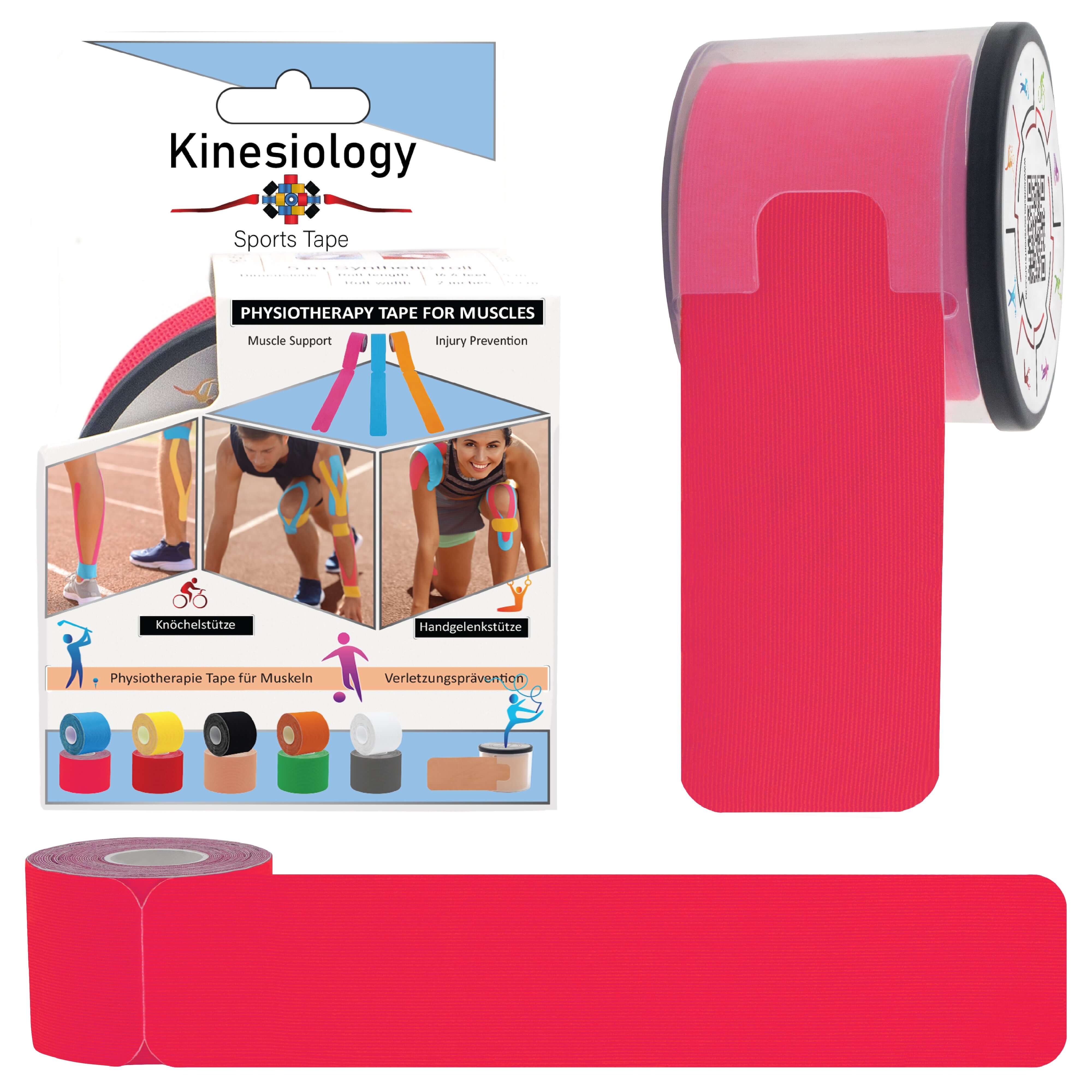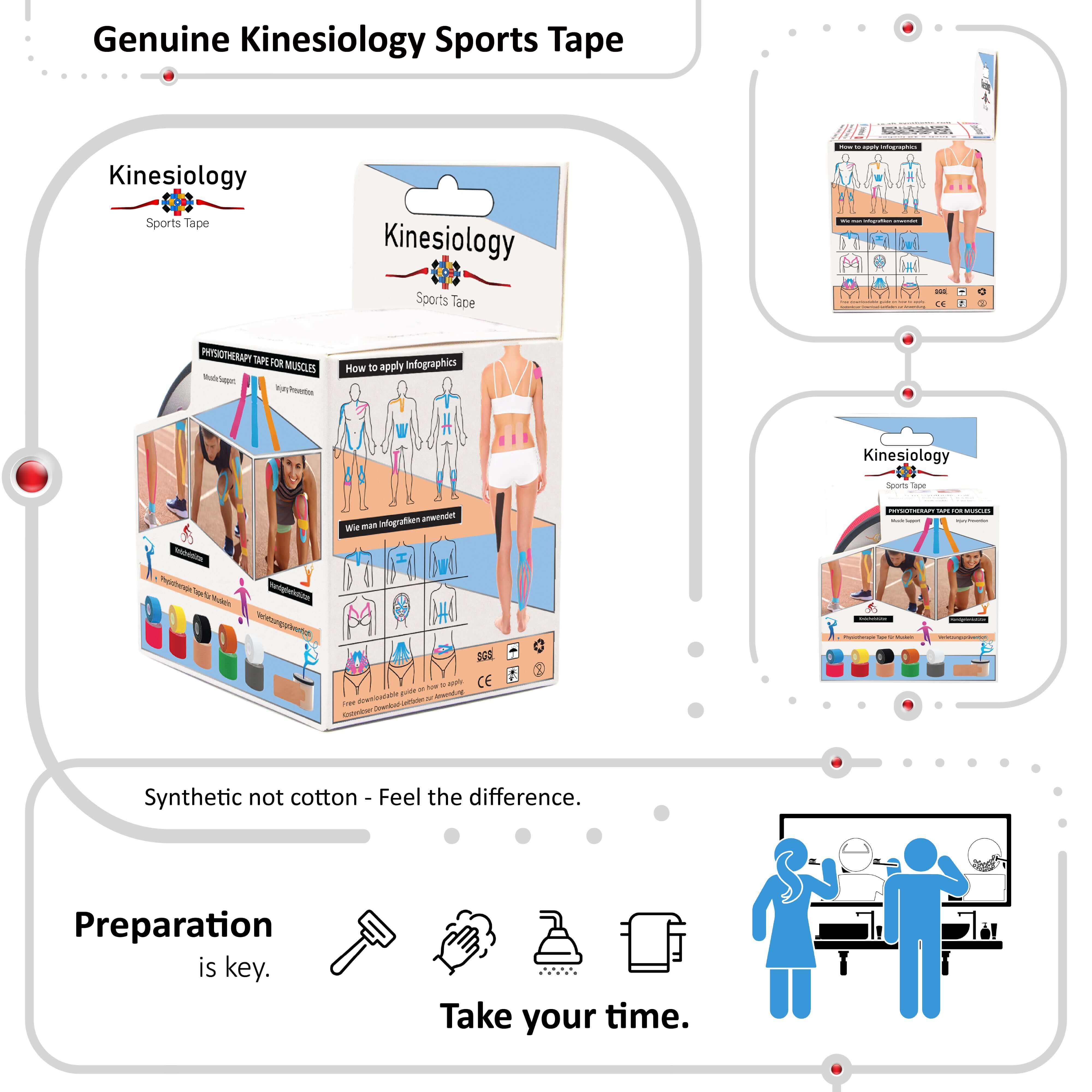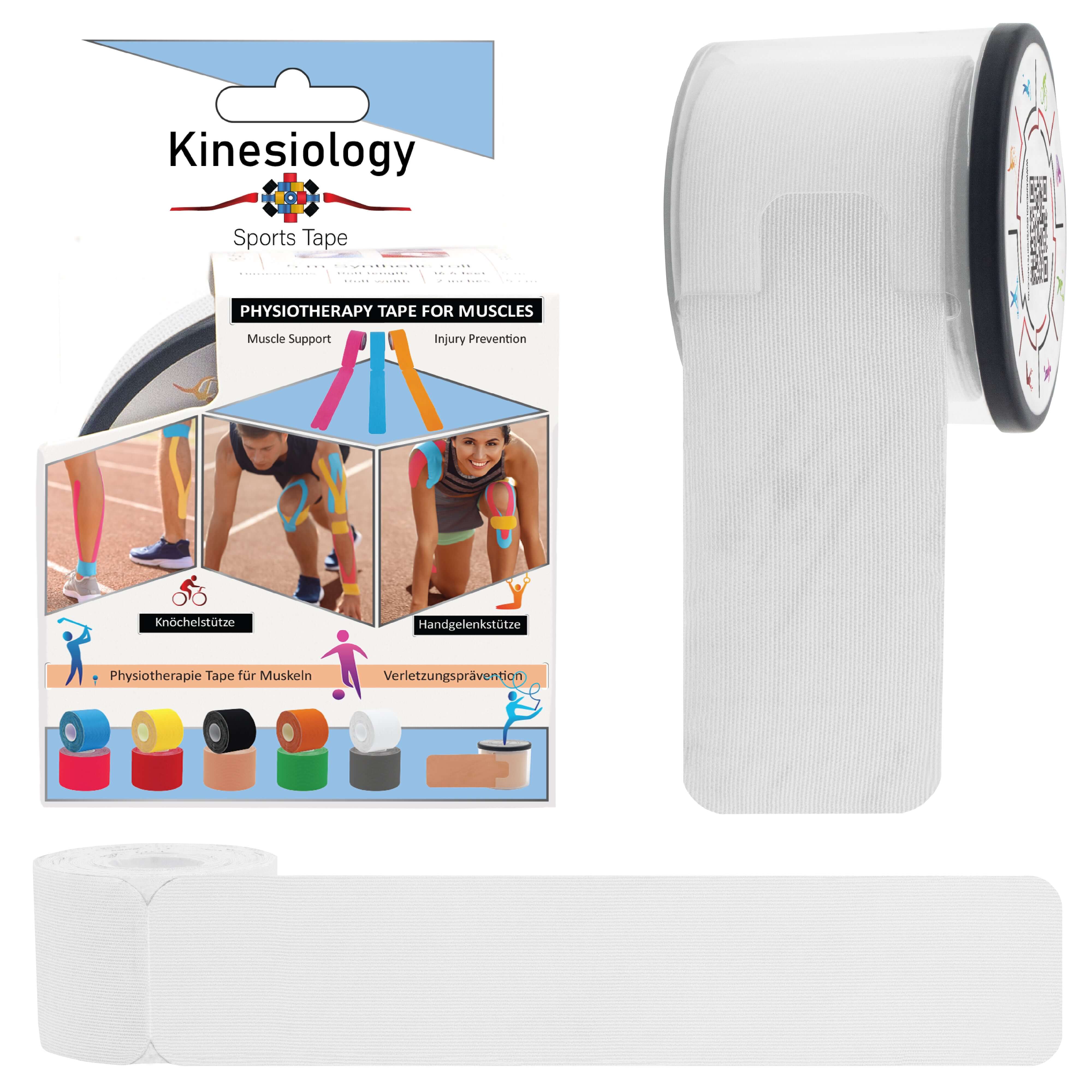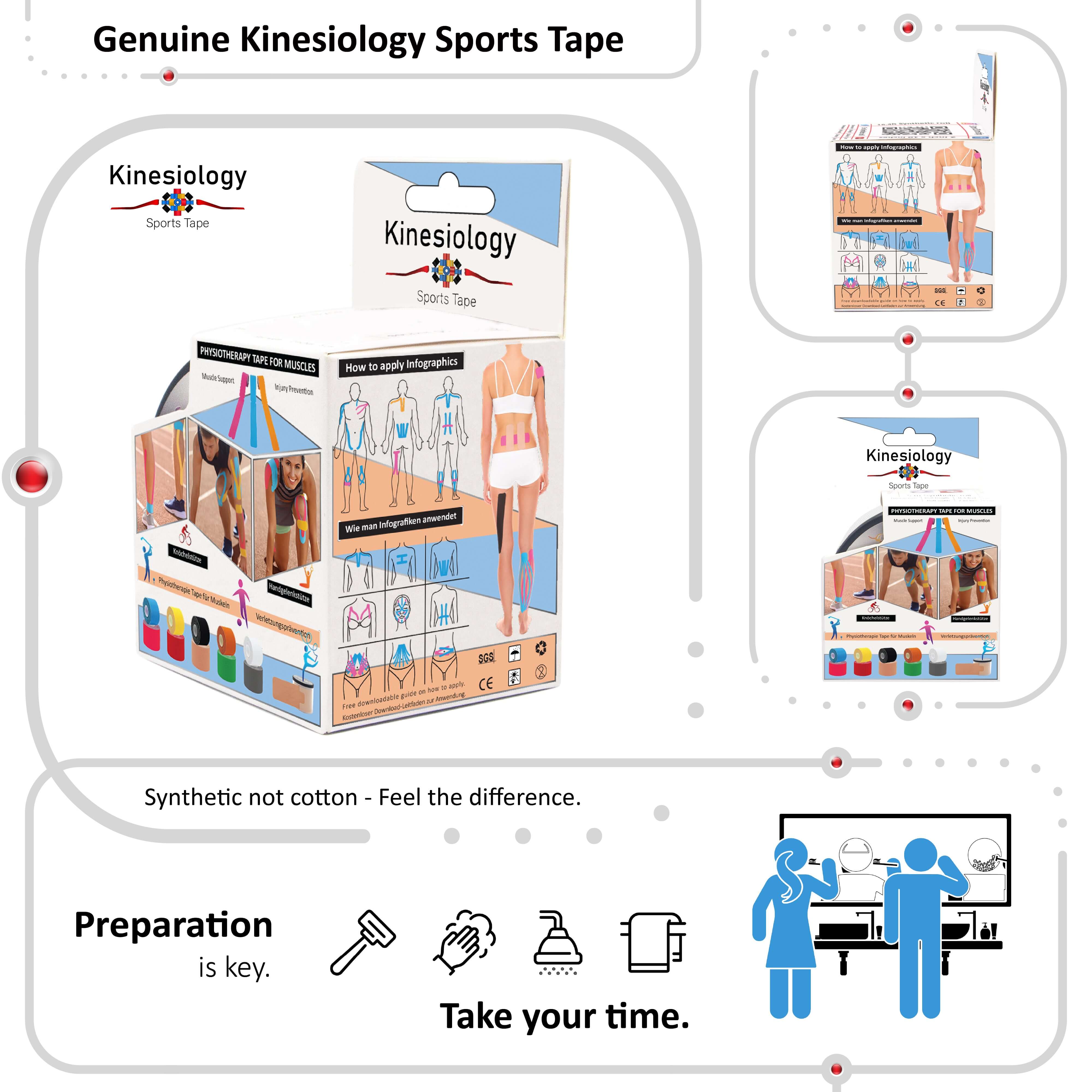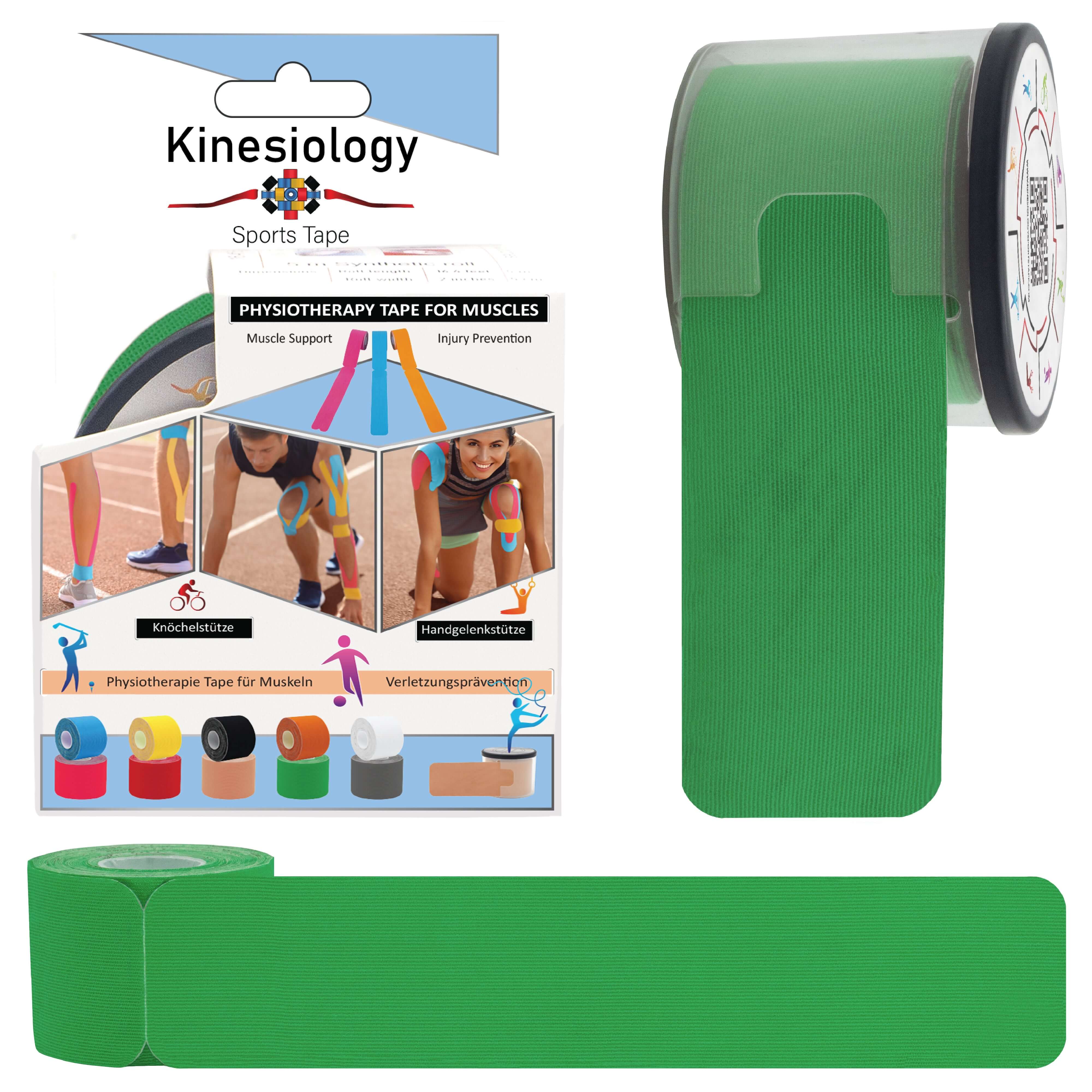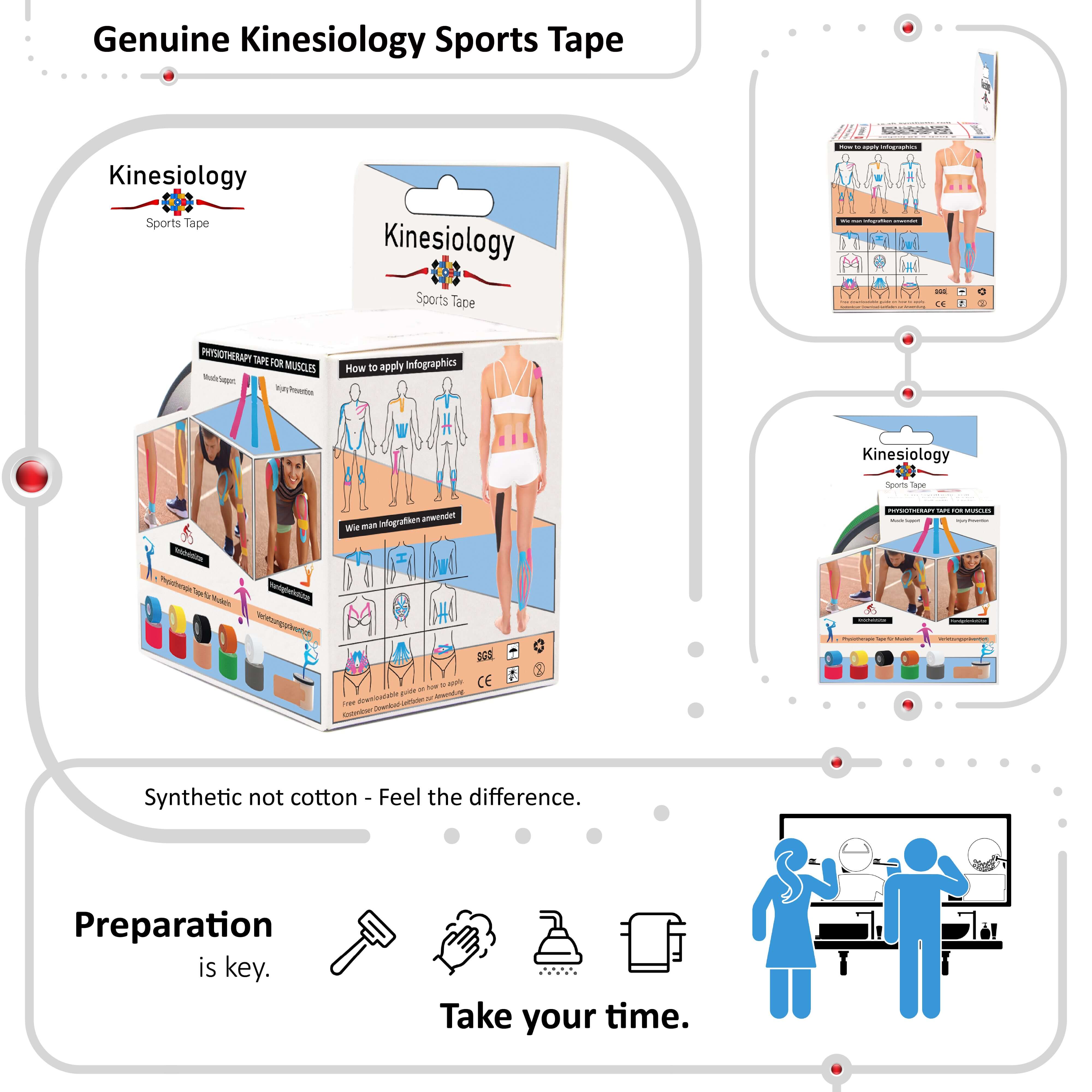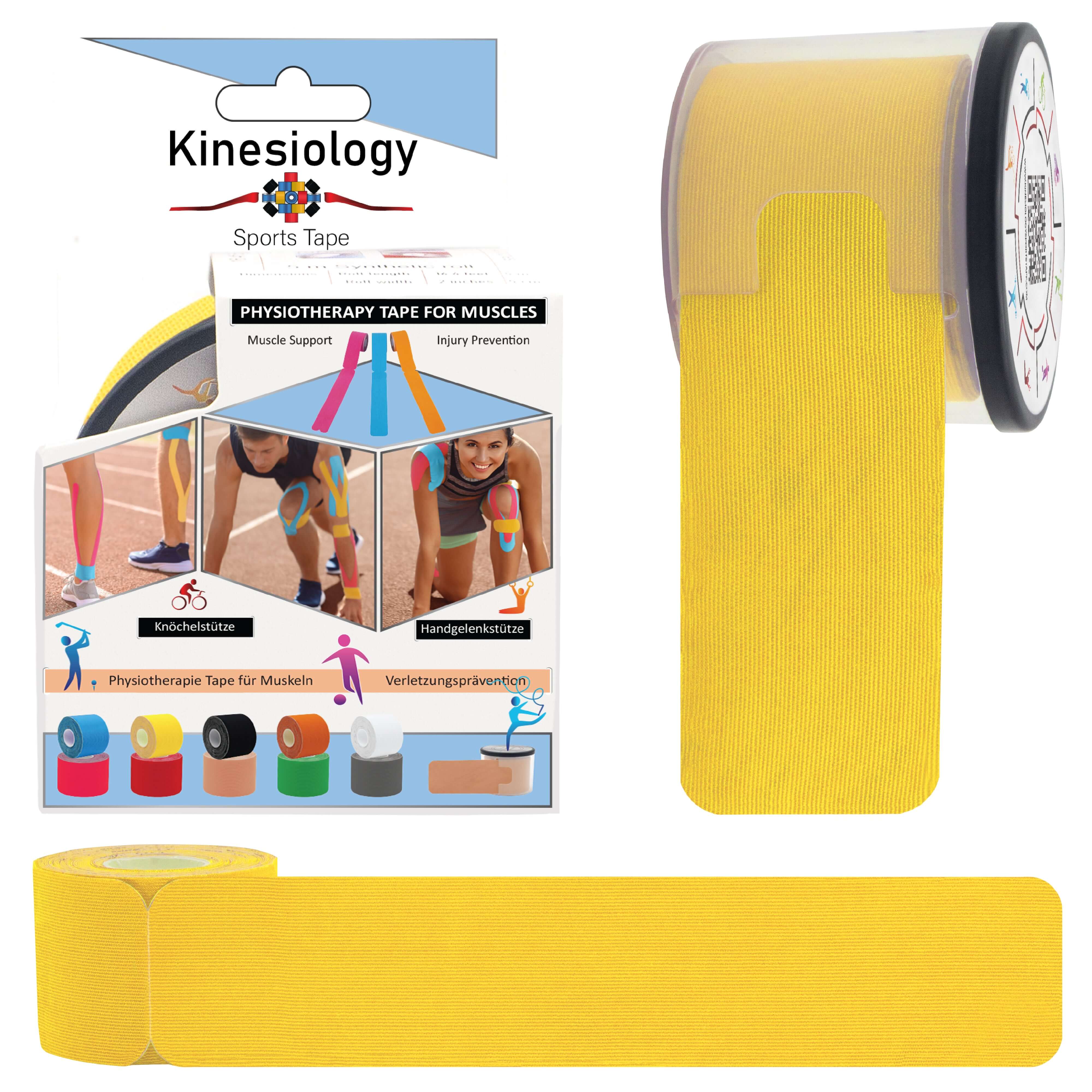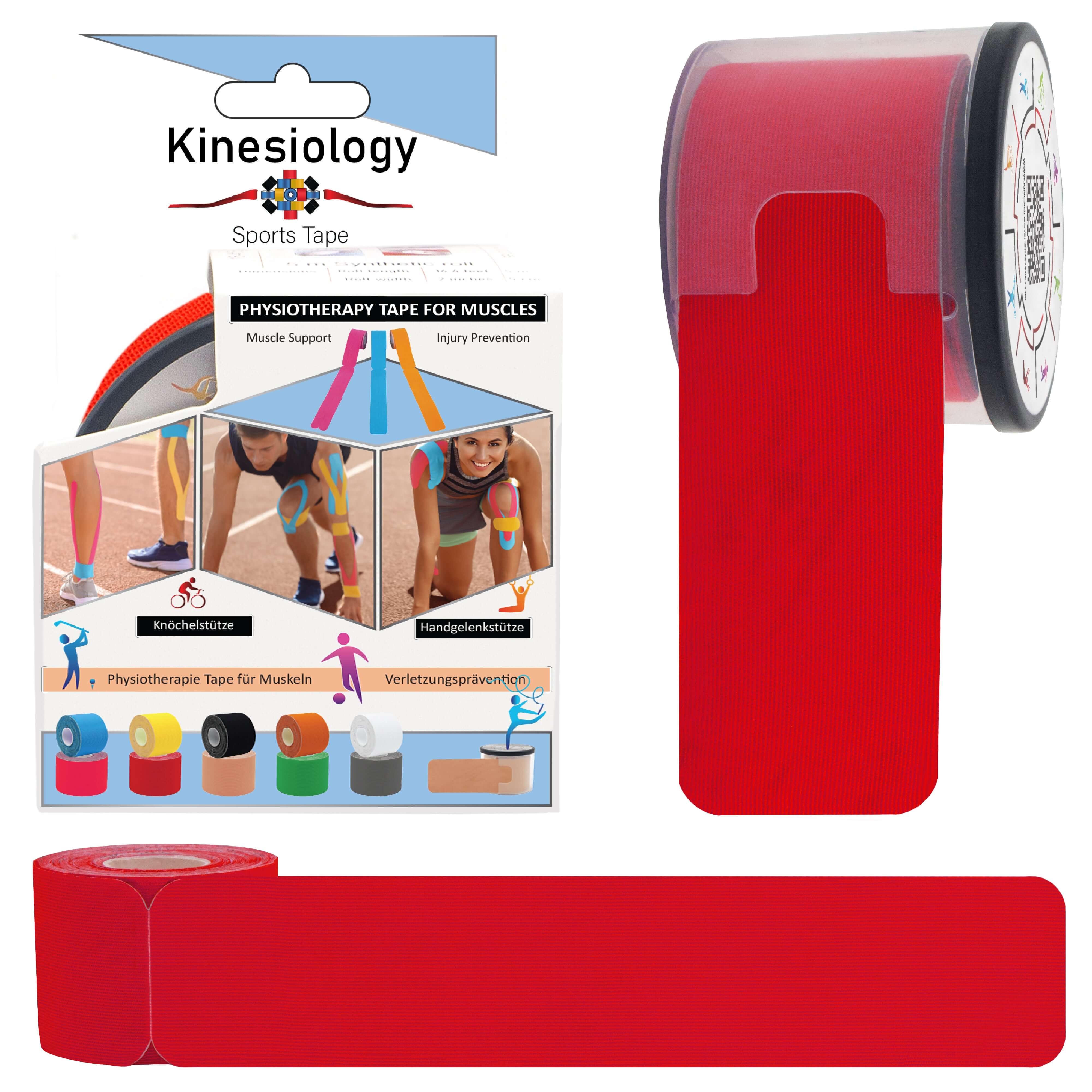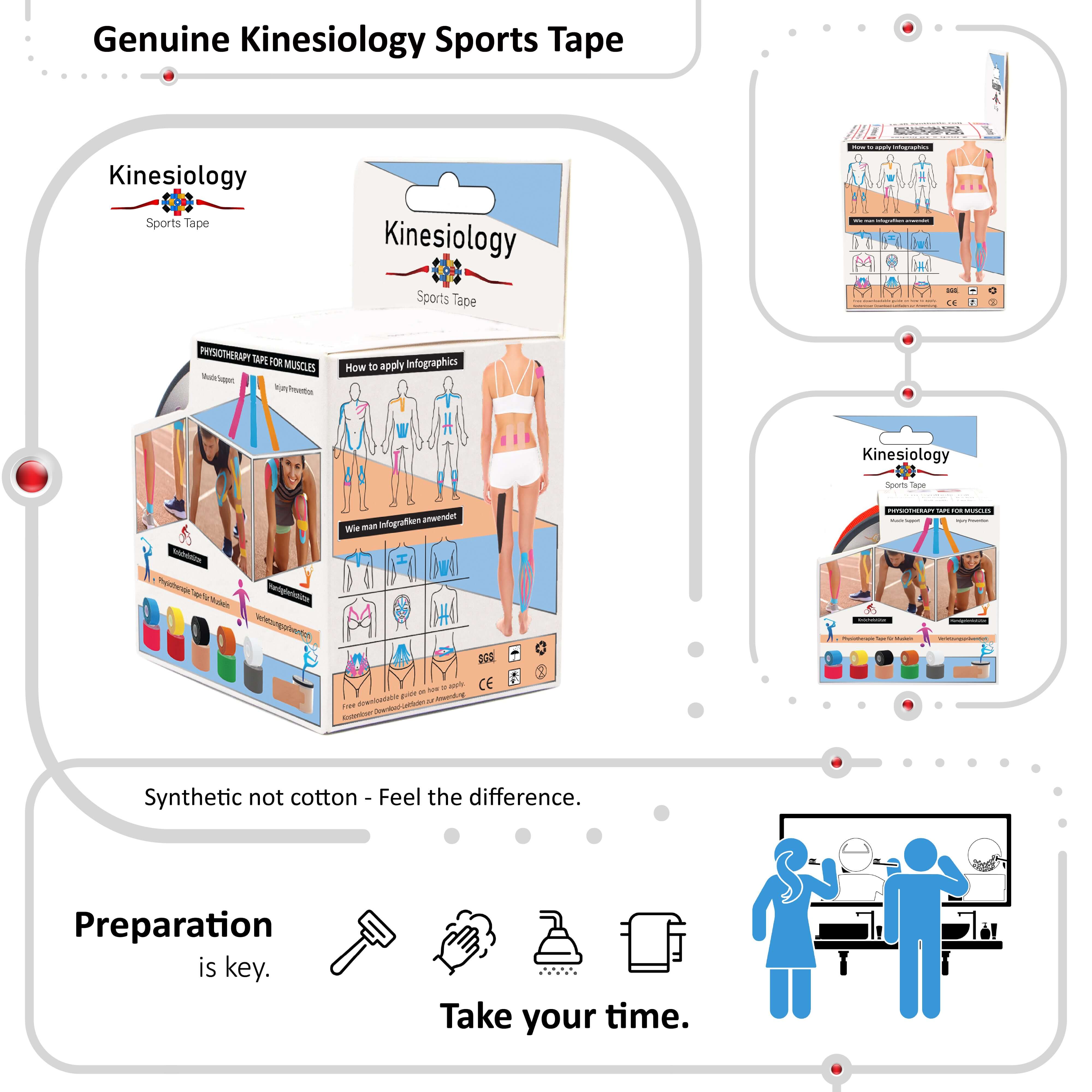
How to apply kinesiology tape

Kinesiology tape, those colorful strips seen on athletes and weekend warriors alike, has become a popular tool for pain relief, injury prevention, and performance enhancement. But how do you harness the power of this tape yourself? Don't worry, applying kinesiology tape isn't rocket science! With a little guidance, you can become your own kinesiology tape pro.
Here's what you'll need:
- Kinesiology tape (available online or at sporting goods stores)
- Scissors (optional, for rounding corners)
- Rubbing alcohol (to clean the application area)
- Towel (to dry the area)
Getting Ready:
- Identify your target area: Is it a sore knee, a tweaked shoulder, or lower back pain? Kinesiology tape can address a variety of issues, so pinpoint the area you want to support.
- Prep the area: Clean the application area with rubbing alcohol and dry it completely. Moisture can affect the tape's adhesion.
- Cut the tape: Measure and cut the desired length of tape. Rounding the corners can prevent snagging.
Tape Application Techniques:
There are various application techniques depending on your goal. Here are two common approaches:
-
I-strip application: This is a basic technique for general support and pain relief. Apply the tape with the muscle relaxed, then stretch the muscle slightly while applying tension to the tape. Anchor both ends of the tape with no stretch.
-
Y-strip application: This technique is used for targeting specific points or improving range of motion. Apply the anchor end of the Y-shaped tape at the origin or insertion point of the muscle. The branches of the Y follow the muscle belly without tension.
Pro Tips:
- Follow online tutorials: Visual learners can benefit from watching video demonstrations of specific taping techniques for their desired outcome.
- Start small: If you're new to kinesiology tape, begin with a small area and a simple application technique.
- Listen to your body: Kinesiology tape shouldn't cause discomfort. If you experience pain or irritation, remove the tape.
- Consult a professional: While kinesiology tape can be a great self-care tool, for chronic pain or injuries, consult a healthcare professional or physical therapist for proper diagnosis and guidance.
Ready to Experiment?
Kinesiology tape offers a non-invasive and drug-free approach to pain management and performance enhancement. With a little practice and the knowledge from this guide, you can unlock the potential of kinesiology tape and take charge of your well-being. Remember, applying kinesiology tape takes some practice, so don't get discouraged if your first attempt isn't perfect.
Bonus Tip: Kinesiology tape comes in a variety of colors and designs. While the color doesn't affect the tape's function, it can add a fun and personal touch!

